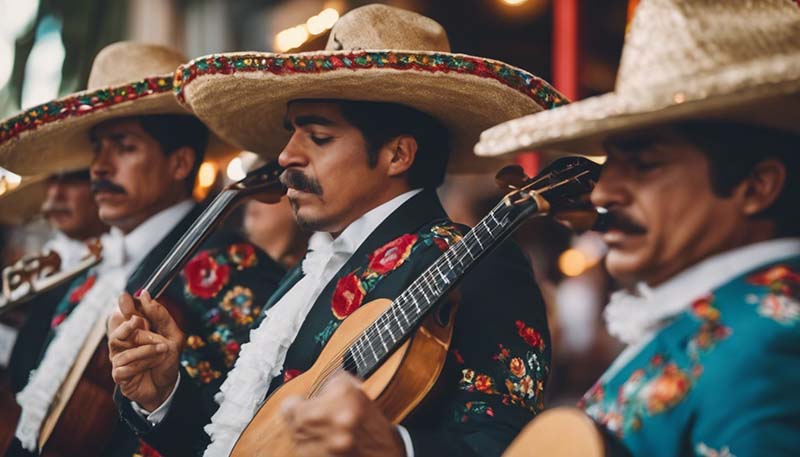The Art of the Mariachi: A Mexican Tradition
The Mariachi is a musical ensemble that has become synonymous with Mexican culture. With its vibrant sound and colorful costumes, Mariachi has captured the hearts of people around the world. This article delves into the rich history, musical styles, and cultural significance of this beloved Mexican tradition.
Introduction to Mariachi
Mariachi music is a form of traditional music performance that originated in the Mexican state of Jalisco. It is characterized by its use of various string instruments, including violins, guitars, and the distinctive large guitarron, as well as trumpets. The music is known for its lively rhythms, heartfelt ballads, and a wide range of emotions that it can convey.
History of Mariachi
The roots of Mariachi can be traced back to the 19th century, with influences from European and African music traditions. The early Mariachi groups were made up of a small number of musicians playing a variety of instruments. Over time, the ensemble grew in size and popularity, and by the mid-20th century, it had become a staple of Mexican musical culture.
The Evolution of Mariachi Ensembles
Early Mariachi ensembles were small and included instruments like the harp, guitar, and various types of violins. The modern Mariachi ensemble, however, typically consists of a larger group of musicians playing violins, trumpets, guitars, and the guitarron, which is a large, deep-sounding bass guitar.
Advertisement
Music and Lyrics
Mariachi music is known for its rich harmonies and the emotive quality of its lyrics. The songs often tell stories of love, loss, and the human experience. Here are some of the most popular types of Mariachi songs:
Rancheras
Rancheras are a type of Mexican folk music that often features themes of patriotism, revolution, and rural life. They are typically performed in a lively, upbeat style that is perfect for dancing.
Corridos
Corridos are narrative ballads that tell stories, often about historical events or legendary figures. They are typically sung in a slower, more emotional style than Rancheras.
Boleros
Boleros are romantic ballads that are characterized by their slow tempo and heartfelt lyrics. They are often performed as duets and are a popular choice for weddings and other romantic occasions.
Cultural Significance
Mariachi music is more than just entertainment; it is an integral part of Mexican cultural identity. It is often used to celebrate important life events, such as weddings, birthdays, and religious ceremonies. Mariachi bands are also a common sight at festivals and other community gatherings, where they provide a soundtrack for dancing and socializing.
The Role of Mariachi in Mexican Society
Mariachi has played a significant role in Mexican society for many years. It has been a source of pride for the country and has helped to promote Mexican culture around the world. The music has also served as a means of preserving traditional customs and values, even as the country has undergone significant social and economic changes.
Mariachi in the Modern World
Today, Mariachi music continues to thrive and evolve. Many modern Mariachi groups incorporate elements of other musical genres, such as jazz and rock, into their performances. The music has also gained popularity outside of Mexico, with Mariachi bands performing in countries around the world and inspiring new generations of musicians to take up the tradition.
Preserving the Tradition
Efforts are being made to preserve the traditional art of Mariachi. This includes the establishment of Mariachi conservatories, where young musicians can learn the history and techniques of the music. There are also numerous festivals and competitions that celebrate the art form and provide a platform for both established and emerging Mariachi groups.
Mariachi music is a living, breathing tradition that continues to captivate audiences around the world. Its unique blend of emotion, storytelling, and musical virtuosity makes it a truly special part of the global cultural landscape.
